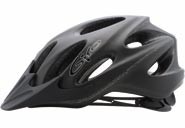 Denis Moore, 50, collided with cyclist James Jorgensen, 55, last September on a roundabout in Seaham, County Durham. Jorgensen died 8 days later of severe head injuries. Although the court was told that Moore was only driving at around 20mph, Moore’s solicitor acknowledged that his client had suffered a “momentary lapse of concentration”.
Denis Moore, 50, collided with cyclist James Jorgensen, 55, last September on a roundabout in Seaham, County Durham. Jorgensen died 8 days later of severe head injuries. Although the court was told that Moore was only driving at around 20mph, Moore’s solicitor acknowledged that his client had suffered a “momentary lapse of concentration”.
At Durham Crown Court last Friday, Judge Richard Lowden gave Moore a 24-week suspended prison sentence. He said the fact that Jorgensen had not been wearing a helmet was a “mitigating factor” and Moore’s sentence would be reduced accordingly. The judge reached this decision without hearing any evidence about the effectiveness of helmets, or whether a helmet would have made any difference to Jorgensen’s injuries.
CTC’s Campaigns & Policy Manager Roger Geffen said: “My first thoughts are for Mr Jorgensen’s family. I cannot imagine how they must be feeling. If bereavement wasn’t enough, they now have a Judge effectively saying Jorgensen himself was partly to blame for his own death, simply because he wasn’t wearing a helmet. There are still serious doubts about the effectiveness of cycle helmets, particularly in preventing serious or fatal injuries, and there is no law requiring cyclists to wear them. This sentence is an extraordinary example of a judge blaming the victim for his own death”.
The decision comes just over 100 days after a civil law case where High Court Judge Griffith Williams gave his opinion that in principle, cyclists without helmets could face reduced damages if it were shown that a helmet would have prevented or reduced their injuries. In the case he was considering, however, he concluded that a helmet would not have prevented the serious injuries suffered by cyclist Robert Smith due to a collision with motorcyclist Michael Finch.
The Government is currently reassessing the evidence on cycle helmets as part of a wider study on cyclists’ safety, in a tacit acknowledgement that the evidence about their effectiveness is still far from clear. The interim findings of the helmet part of the study are expected next month, with a final report due out by the end of the year.



